#noble scott amalgamation
Text
Demon+Amalgamation Lore
Both demons and angels change appearance to suit their mental state, including gender expression and mental age.
Demons have very few abilities of their own. They however can influence evil and seduce humans easily.
Demons are fallen angels, stripped of their prior abilities due to some wrongdoing of their own- determined by God. They are banished from the heavens, unable to return. Due to this, they have to borrow angel’s abilities to become Amalgamations. To borrow these abilities, they kiss an angel- which automatically transfers the angel’s soul to the demon’s body. The soul is returned with a kiss, so it can be borrowed for any amount of time. The longer an angel goes without a soul, the weaker they become. Around 48 hours is the limit of time before the angel loses memories and becomes significantly physically and mentally weaker, also lengthening the recovery time. Recovery time begins when the soul is returned, and lasts at least as long as the time the soul is borrowed.
As an amalgamation, demons are capable of anything that angels are, including flying, forcing love fates, alluring humans, visiting Eden, and releasing angel pheromones (causing humans and angels to be attracted to them despite any prior circumstances). The higher rank of angel that is borrowed from, the stronger the abilities are.
It is best to make sure an angel is being cared for while they don’t have their soul, as they’re stuck in a dream-like state and cannot take care of themselves and are extremely prone to injury. After their soul is returned, the memories of the time without it are extremely unclear. Angels have a very slight memory of what the amalgamation experiences.
Noble borrows from Scott, a low rank angel. So as the amalgamation Alice, his abilities aren’t strong but he uses them strategically. He doesn’t care about Scott’s wellbeing during this, abandoning him at home in the basement or at a house in the middle of the countryside. He often borrows his soul for many days at a time. He only cares for Scott during recovery time to keep him alive and to convince him that the relationship is healthy.
(The lore is on all the demon pages. Noble’s page includes the last paragraph)
#character lore#lore#oc lore#story building#storybuilding#oc story#demon lore#amalgamation lore#demon#amalgamation#angel#original character lore#dark fiction#dark fic
11 notes
·
View notes
Text
COMIC BOOK REFERENCES & EASTER EGGS - Shang-Chi and the Legend of the Ten Rings (2021)
The following is a guide to all the comic book references and Easter eggs I’ve spotted in Shang-Chi and the Legend of the Ten Rings along with any deviations from the source material. Note that owing to the convoluted and complex nature of comic books, I’ve tried to include only the most essential information regarding a character’s history and backstories.
In both media, Shang-Chi is known as an expert martial artist. As revealed in Special Marvel Edition #15 (1973), his comic book incarnation was raised at his father’s fortress in China. He was trained to fight by tutors and his father. At nineteen years of age, he was tasked by his father to assassinate Dr James Petrie (In the film, Shang-Chi is sent to kill the leader of the Iron Gang). After completing this assignment (in actuality Shang-Chi had attacked an android facsimile), he meets MI6 agent Sir Denis Nayland Smith, who reveals to him that his father is a criminal and not the noble man he was led to believe growing up. Shang-Chi returns to his father who confirms what he has learned. With this, Shang-Chi leaves, declaring that they are now enemies, and begins a new life in New York. Notably, this version of the character is half Chinese, with his mother being a White American. In the film, Shang-Chi’s mother, Jiang Li, is of Asian descent.
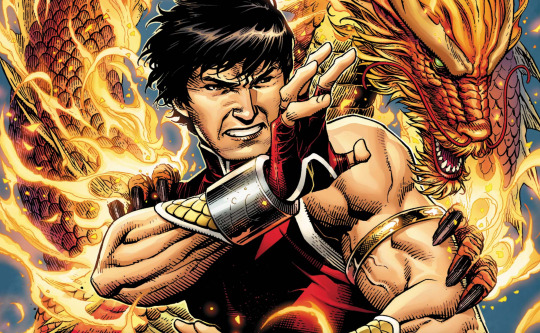
Wenwu is an amalgamation of two characters from the source material: the Mandarin and Fu Manchu. Though he claims to be a direct descendant of Genghis Khan, the comic book incarnation of the Mandarin was born to an unknown Chinese father and English mother who was a prostitute. In addition to being a superb martial artist and tactician, he possesses ten rings (worn on his fingers; in the film, they’re akin to bracelets), each of which grants him a different power. The ring worn on his right thumb allows him to rearrange matter, the ring on his right index finger can generate a concussive force, the one on his right middle finger enables the Mandarin to create a vortex from the air, the one on his right ring finger produces a disintegration beam, the one on his right little finger generates an area of darkness, the ring worn on his left thumb produces a range of electromagnetic energy, the ring on his left index finger can generate heat and flames, the one on his left middle finger discharges electricity, the one on his left ring finger enhances his psionic energy, and the one on his left little finger generates cold and ice. The Mandarin obtained the objects from the wreckage of a spaceship belonging to the Makluans (also known as Kakaranatharian).

In the comics, Fu Manchu is Shang-Chi’s father. He leads the secret organisation Si-Fan and has several bases around the world including one in Hunan, China. He’s a skilled combatant and has lived an extremely long life due to his consumption of the Elixir Vitae (In the MCU, Wenwu’s longevity is attributed to the ten rings). Fu Manchu was created by English author Sax Rohmer and featured in several novels before Marvel acquired the licence to use the character in their comics. With Marvel no longer having the rights to Fu Manchu, in Secret Avengers #8 (2010) it’s revealed that the character’s real name is Zheng Zu, with Fu Manchu being one of several aliases he’s used throughout the years.

While Xialing is a new character created for the film, Shang-Chi does have many siblings in the comics. The first one we learn about is Fah Lo Suee (another Rohmer creation), Shang-Chi’s half-sister. Although she initially sides with her father, she would go on to oppose him. Fah Lo Suee made her first Marvel Comics appearance in Master of Kung Fu #26 (1975). Then there’s Moving Shadow, Shang-Chi’s younger half-brother, who made his debut in Shang-Chi: Master of Kung Fu #1 (2002). First appearing in Black Panther #11 (2005) is Kwai Far, Shang-Chi’s sister who was offered as a bride to T’Challa. The story “Brothers and Sisters” (Shang-Chi #1-5, 2020-21)—released during production on Shang-Chi—would reveal the existence of even more siblings: Brother Staff, Shi-Hua/Sister Hammer, Takeshi/Brother Sabre, and Esme/Sister Dagger.

The Golden Daggers club is a reference to the Golden Dagger Sect of the comics, a criminal organisation led by Fah Lo Suee.
The comic book incarnation of Li Ching-Lin/Death-Dealer is an assassin and former MI6 agent who worked for Fu Manchu. He’s an experienced martial artist who wields triple-bladed weapons.

Several characters have used the Razor-Fist moniker in the comics. The first was William Young, who made his debut in Master of Kung Fu #29 (1975). Later, brothers Douglas and William Scott took on the identity. The pair first appeared in Master of Kung Fu #105 (1981). All three Razor-Fists have worked for drug lord Carlton Velcro. As their name implies, each of the Razor-Fists have had one or both their hands replaced with steel blades. The MCU version of Razor Fist, with his connection to the Ten Rings, may be partially based on the Razor Fist from Earth-13116. In this reality, the character is a student at the Ten Rings martial arts school (with the Master of the Ten Rings, Zheng Zu, being the emperor of K’un Lun).

In the comics, Ta-Lo is an extradimensional realm that’s home to the Xian (or Taoist gods). Creatures such as fenghuang, dragons, and haetae also inhabit the dimension. It made its first appearance in Thor #301 (1980).

In the film, the creature trapped in Ta Lo is referred to as the Dweller-in-Darkness. The comic book incarnation of the Dweller-in-Darkness originates from the Everinnye dimension and exists only as a head (though does use a robotic body). The Dweller-in-Darkness has the ability to cause others to feel fear, which he feeds off, making him more powerful.

There are also several MCU Easter eggs. The Blip is referenced on a poster while the Snap is alluded to by one of Shang-Chi’s friends. The street vendor from Spider-Man: Homecoming is a passenger on the bus when Shang-Chi fights Razor Fist. The Abomination (who now appears more reptilian per his comic book counterpart) fights Wong at the Golden Daggers club. Other contestants at the club include an Extremis soldier and an Asian Black Widow (we find out that her name is Helen). Wenwu watches footage of Tony Stark being held captive by the Ten Rings (taken from Iron Man). Wenwu holds Trevor Slattery prisoner having broken the actor free from Seagate Prison in All Hail the King. Shang-Chi meets Bruce Banner and Captain Marvel in the mid-credits scene.
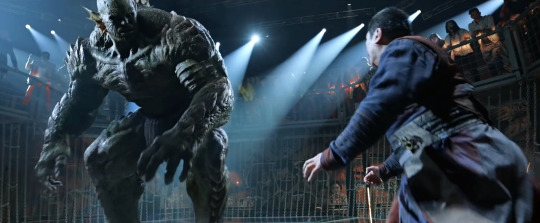
Like the Facebook page.
Follow on Instagram.
Get the books: Phase One | Phase Two | Phase Three
Listen to the podcast: Anchor | Breaker | Google Podcasts | Spotify
#Shang-Chi#Shang-Chi and the Legend of the Ten Rings#Marvel#Marvel Studios#MCU#Marvel Cinematic Universe#Easter eggs#Wenwu#Wong#Mandarin#Fu Manchu#Ten Rings#Ta Lo#Xialing
29 notes
·
View notes
Text
Star Wars: The High Republic Informal Review
These are my initial thoughts and minutely biased opinion/review of the High Republic.
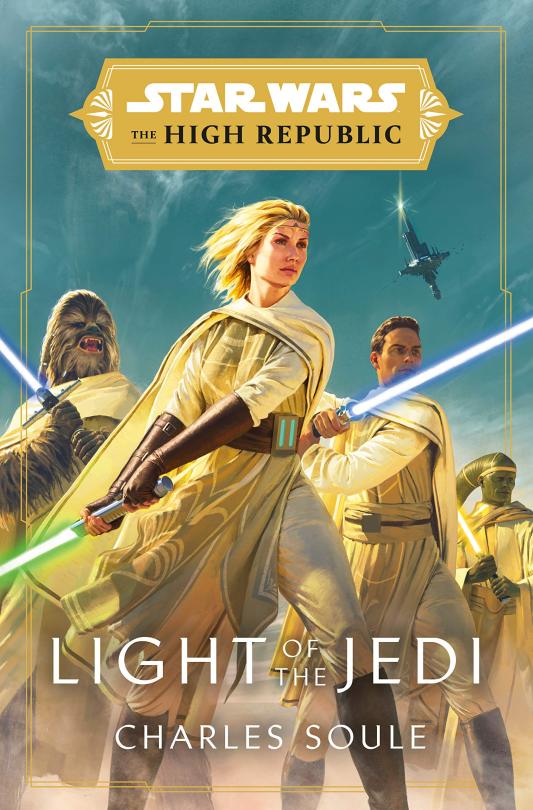
My basis is primarily founded on the first two issues of the High Republic comic book – written by Cavan Scott – along with a secondary basis, from a secondhand account of the book Light of the Jedi, written by Charles Soule. It is a secondary account because I don’t read books; I am not a book man. My friend loves to read books and he graciously gets on Discord with me basically every day and together we dissect and discern what’s going on in this new period of the galaxy.
This evaluation will mainly concentrate on the book portion and while not all encompassing, will give you a significant gist of how I’m feeling about High Republic. Also, there will be SPOILERS – you have been warned.
Overall, the book seems to have a strong first third, gets into a lull in the second third, and somewhat recovers in the last third but, arguably not as strong as that first third. The strengths of the book are definitely world building, the focus on Starlight Beacon, and finally, the introduction to all the new (old) Jedi; the Jedi are the best thing about the book.
Plot wise, the book centers on and around Starlight Beacon with hyperspace being the driving force of the conflict.

Starlight Beacon is akin to an amalgam of air traffic control, a mutli-cultural embassy, a Jedi Temple, and a bazaar. At this point, it housed the largest number of Jedi outside of Coruscant and used signals to guide travelers during their interplanetary journeys. It was made in response to the Great Disaster – a hyperspace tragedy that caused starships all across the galaxy to be abruptly launched out of hyperspace leading to several moons in the Trymant system, including Korbatal, to be destroyed. Beacon exists to better calibrate for, identity, and curtail these new anomalies as astromech droids are a rarity in this period of time.

Around the same time, a marauder group – called the Nihil – have found a way to board and raid ships while they are in hyperspace using hyperspace channels termed Paths. Through the use of devices - called Path Engines - Nihil ships are to make short-burst hyperspace jumps, allowing them to appear and disappear in a flash during battle. Their raids have led to deaths, including that of Jedi Jora Malli - a Togruta Jedi Master that sees the Force as a force – always in competition with itself. She was also very close friends with Sskeer; a Trandoshan Jedi Master that lost an am during the raids.

In accordance with that last point, hyperspace will be somewhat of the crux contention to fans (and really science fiction enthusiast in general) as this is not how hyperspace has generally been established to work in Star Wars yet, is the lynch pin in how conflicts happen. This even follies with the newly established way hyperspace works in The Last Jedi and The Rise of Skywalker but, I digress…

I knew there were going to be some major plot holes in this super prequel series but, my best hope was that they wouldn’t be too gaping. Just knowing that this application exists, changes many aspects of space travel and what characters going forward should know about it.
Canon mechanics aside, Charles Soule makes it clear why was given this duty; he has blatant skill for writing not only characters but, also taking the extra steps of having the individualized power of the character be an extension of them. He did this very well during his run in Uncanny Inhumans and he’s not disappointing here either (he’s had plenty of practice in the Star Wars realm already with books like Star Wars, Poe Dameron, and The Rise of Kylo Ren).
There are a multitude of Jedi brought in, which complements the time period and era of it being the High Republic but, the real asset of the book is Soule taking the needed time to give the reader a look at how each Jedi interprets the Force in their own way. Moreover, the pairings of different Jedi serve as accompaniments to each other in very noteworthy ways.

Jedi Master Loden Greatstorm, sees the Force as an ocean.

His Padawan, Bell Zettifar sees it as a flame – sometimes a raging inferno, sometimes glinting ember. (This is very fascination as usual flames are a motif associated with the Sith yet, here is Bell - a shining example of a Jedi - interpreting fire in a positive light. I also like how view of the Force allowed him to synch with his charhound, Ember).
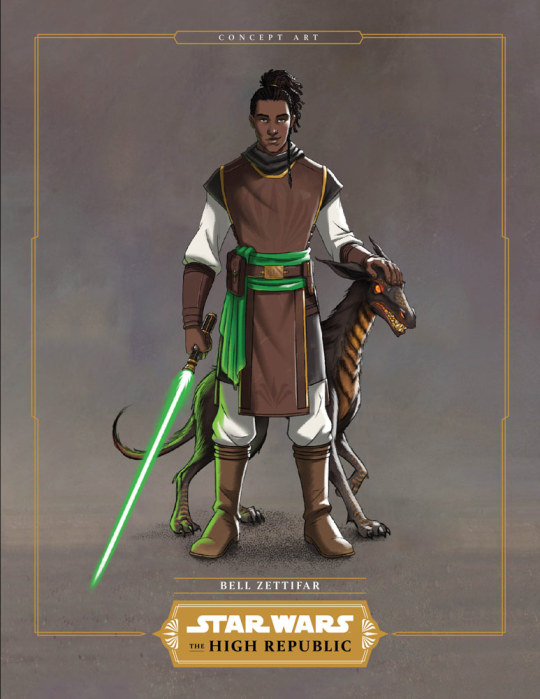
Wookie Padawan Burryaga Agaburry, perceives it has a tree attached to a leaf of equal size.
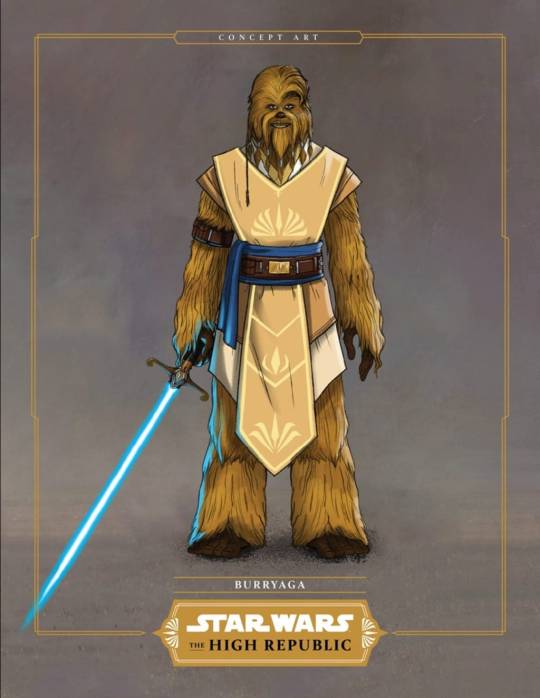
Vernestra Rwoh, the one of the youngest Jedi Knight in the order, sees it as a river.
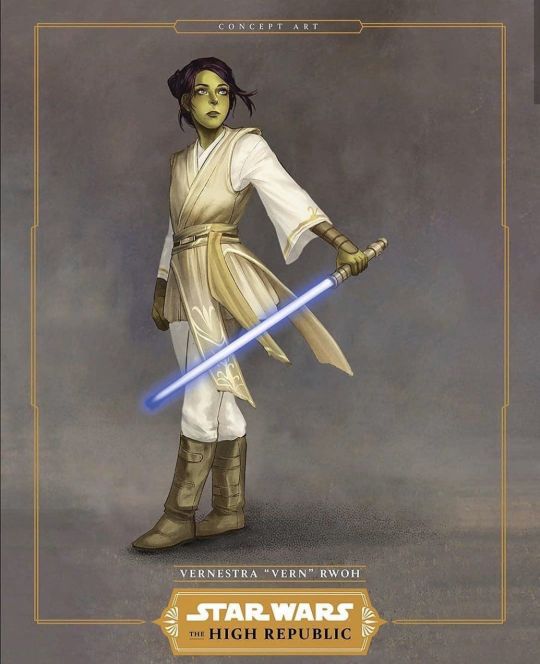
Reath Silas, see it as a spider web – strong in some spots, weak in others.

Elzar Mann, views it as an endless, bottomless sea which was impossible to be used up, not matter for what purpose or however many times it was called upon. (I’m curious to see if there will be a differentiation between how Mann sees the force when compared to Greatstorm; an ocean is deeper than that of a sea.)

Finally, Jedi Master Avar Kriss, hears the Force as a symphony – moreover, she can connect with minds of other Jedi and is able see how other see how they see the Force.

Hot take but, the character of Kriss feels like a Kathleen Kennedy character as Kennedy been prone to interject White, third wave feminism (if you’re not intersectional then you’re not a “feminist” to me) into Star Wars. One of her signatures is to take a White human female and make her the either the main character or a key figure in the narrative. Avar Kriss, a White blonde-haired human woman, is literally depicted as “the brightest, most noble example of Jedi-hood” so, I’m keeping a keen eye on her – doesn’t help that she just got assigned Marshall to Starlight Beacon but, if it’s any consolation (more like mitigation), she was the SECOND pick as the first died.
Ultimately, if you are able to get the major hurdle that is hyperspace Paths, this is a competent and enjoyable start.
Soule even goes as far to add some interesting and even practical – yet lore breaking – devices in this age: he’s made a new (old) space ship called “Vectors” that are powered/steered by Force sensitive people with the lightsaber being the key to active it (even cooler, the hub takes the color of the lightsaber that activates it).

That’s a great idea and makes sense within the universe as whole yet, collapses on itself when you remember what time period, we’re in – the past, so why was this not built upon in the future?
It definitely feels like the books are 85% of the story while the comics (more on them in a later post) are – at their prime peak – a mere “intrinsic 15%”.
The best part for me has been the characters; hopefully, the plot will come along to accent them justly.
Arguably though, the best characters – that of Loden and Bell – should be depicted in the comics based on their gravitating dynamics and instant attachment with readers.

#star wars#the high republic#high republic#charles soule#light of the jedi#starlight beacon#loden greatstorm#bell zettifar#burryaga agaburry#vernestra rwoh#vern#reath silas#elzar mann#avar kriss#jora malli#sskeer#hyperspace#nihil#the path#vectors#kathleen kennedy#uncanny inhumans#the rise of kylo ren#poe dameron#the last jedi#rise of skywalker#cavan scott#white feminism#intersectional feminism
45 notes
·
View notes
Text
The Neurological Similarities Between Successful Writers And The Mentally Ill
By Cody Delistraty
Source: http://thoughtcatalog.com/cody-delistraty/2014/03/the-neurological-similarities-between-successful-writers-and-the-mentally-ill/
---
[This with a pinch of salt]
---
Knowing his wife was upset with him for spending more time with his typewriter than with her, F. Scott Fitzgerald hatched a plan. He wasn’t proud of many of his short stories (he only included 46 of his 181 short stories in his published collections), but he knew that in order to win back his wife he’d have to whip up something quickly. Working from 7 a.m. to 2 a.m., he churned out “The Camel’s Back” for The Saturday Evening Post for a fee of $500. That very morning, he bought Zelda a gift with the money he had made.
“I suppose that of all the stories I have ever written this one cost me the least travail and perhaps gave me the most amusement,” he commented in the first edition of Tales of the Jazz Age. “As to the labor involved, it was written during one day in the city of New Orleans, with the express purpose of buying a platinum and diamond wristwatch which cost six hundred dollars.”
This was in 1920, and Zelda’s frustrations could still be assuaged with a well-timed gift. (After all, it was only after Scott had the money and prestige from publishing This Side of Paradise that she agreed to marry him earlier that year.) It wasn’t long though until Zelda had grown so fed up with Scott’s drinking and self-isolation that she lashed out, cheating on him with a French naval aviator while Scott was working on The Great Gatsby in the South of France. From then on, their marriage devolved into arguments and a devastating cocktail of debt, drink, and manic depression.
“Zelda’s spending sprees, her ‘passionate love of life’ and intense social relationships, her melancholic response to disappointment and the relatively late onset of her illness (she was born in 1900) point toward a mood disorder, as does the alternation between frank psychosis and a sparkling, provocative personality,” noted an older article in The New York Times Magazine that asked “How Crazy Was Zelda?”
The Fitzgeralds are perhaps the best — or at least the most intriguing — example of writers whose talents, when mixed with depression and vices (like alcohol and spending sprees), burned brightly then collapsed calamitously.
But of course, it’s not just the Fitzgeralds who battled depression and led lives that eventually spun out of their control. Mark Twain, Tennessee Williams, Sylvia Plath, Emily Dickinson, Stephen King, Anne Rice, David Foster Wallace, even J.K. Rowling are just a few of the writers who have been struck by the illness that Hemingway once referred to as “The Artist’s Reward.”
The common theory for why writers are often depressed is rather basic: writers think a lot and people who think a lot tend to be unhappy. Add to that long periods of isolation and the high levels of narcissism that draws someone to a career like writing, and it seems obvious why they might not be the happiest bunch.
Dig a little deeper though, and some interesting findings reveal themselves — findings not just about the neuroscience of writerly depression, but about why Hemingway was so awful to Hadley, why Scott and Zelda drove each other mad, and why writers, by and large, are not only depressed people but also awful lovers.
A few months back, Andreas Fink at the University of Graz in Austria found a relationship between the ability to come up with an idea and the inability to suppress the precuneus while thinking. The precuneus is the area of the brain that shows the highest levels of activation during times of rest and has been linked to self-consciousness and memory retrieval. It is an indicator of how much one ruminates or ponders oneself and one’s experiences.
For most people, this area of the brain only lights up at restful times when one is not focusing on work or even daily tasks. For writers and creatives, however, it seems to be constantly activated. Fink’s hypothesis is that the most creative people are continually making associations between the external world and their internal experiences and memories. They cannot focus on one thing quite like the average person. Essentially, their stream of ideas is always running — the tap does not shut off — and, as a result, creative people show schizophrenic, borderline manic-depressive tendencies. Really, that’s no hyperbole. Fink found that this inability to suppress the precuneus is seen most dominantly in two types of people: creatives and psychosis patients.
What’s perhaps most interesting is that this flood of thoughts and introspection is apparently vital to creative success. In Touched with Fire, a touchstone book on the relationship between “madness and creativity,” Kay Redfield Jamison, a psychiatry professor at Johns Hopkins, reported that successful individuals were eight times more likely as “regular people” to suffer from a serious depressive illness.
If you think about it though, this “mad success” makes sense. Great writing requires original thinking and clever reorganization of varied experiences and thoughts. Whether it’s Adam Gopnik’s first piece for The New Yorker that related Italian Renaissance art with the Montréal Expos or Fitzgerald trailblazing the “Jazz Age” with his combination of Princeton poems and socioeconomic class sensibilities in This Side of Paradise, a writer’s job is to reshape a hodgepodge of old ideas into brand new ones. By letting in as much information as possible, the brains of writers and artists can trawl through their abundance of odd thoughts and turn them into original, cohesive products.
It’s not a surprise then that Tim Burton, Quentin Tarantino, and the most wildly creative writers of our generation have such bizarre ideas: they cannot stop thinking, and whether pleasant or macabre, their thoughts (that can turn into masterpieces like The Nightmare Before Christmas and Pulp Fiction) are constantly flowing through their minds.
Although this stream of introspection and association allows for creative ideas, the downside is that people with “ruminative tendencies” are significantly more likely to become depressed, according to the late Yale psychologist Susan Nolen-Hoeksema. Constant reflection takes a toll. Writing, editing, and revising also requires are near obsession with self-criticism, the leading quality for depressed patients.
In fact, a study conducted by Nancy Andreasen at the prestigious Iowa Writers’ Workshop found that 80% of the residents displayed some form of depression.
“One of the most important qualities [of depression] is persistence,” said Andreasen. “Successful writers are like prizefighters who keep on getting hit but won’t go down. They’ll stick with it until it’s right.”
While Fitzgerald liked to boast of his raw talent that allowed him to come up with clever stories for the Post or The Smart Set in mere hours, biographers have noted that he spent months pouring over drafts — a perfectionist making revision after revision. For better or for worse, creativity and focus are inextricably linked. As Andreasen said, “This type of thinking is often inseparable from the suffering. If you’re at the cutting edge, then you’re going to bleed.”
This mishmash of unremitting rumination and self-criticism means that writers are always working. Even quotidian life is a writerly task. In an interview with The Paris Review, Joyce Carol Oates said, “[I] observe the qualities of people, overhearing snatches of conversations, noting people’s appearances, their clothes, and so forth. Walking and driving a car are part of my life as a writer, really.”
Now, for just a second, put aside the recent news that journalism/writing was ranked as the sixth most narcissistic job by Forbes. And don’t think about the fact that writing is not only a lonely job, but it is also one that can turn a pleasant walk or a drive into a form of work. Instead, focus on how writing is about being able to create and control a world.
For what is writing, but an amalgamation of our thoughts and experiences finished off with a wax and a shine?
This need for control often translates to real life too, and it comes at the expense of the feelings and wishes of nearly everyone around them. Writers are often such terrible lovers because they treat real people as characters, malleable and at their authorial will.
When Charles Dickens was 24 (and allegedly a virgin), he married Catherine Hogarth, then 21. Almost immediately after they married, he became infatuated with Mary, her younger sister (so much so that she would later become the basis for Little Nell in The Old Curiosity Shoppe). Mary died shortly thereafter, which proved a devastating blow for Charles, and for the rest of their marriage Catherine futility tried to live up to her sister. After 22 years and 10 children with Catherine, Charles met Nelly Ternan, a young actress, and deciding that he was quite tired of his wife, tossed her aside in favor of this new mistress.
Like so many authors, from Fyodor Dostoevsky to Ezra Pound to V.S. Naipaul, Dickens wasn’t much of a good person. In fact, he was a rather terrible person and had history not bowed at the beauty of his fiction, he would have been remembered poorly.
Writers can be rather awful people, and their blend of depression, isolation, and desire to control not only their own characters but the “characters” of their real lives has been a relationship-killer for centuries.
(As for the other relationship-destroyer — writers’ infamous penchant for alcohol — Gopnik postulates, “Writing is work in which the balance necessary to a sane life of physical and symbolic work has been wrested right out of plumb, or proportion, and alcohol is (wrongly) believed to rebalance it.”)
Trying to balance vice, borderline mental illness, and a disregard for the real world in favor of fictitious ones is perhaps a noble but Sisyphusian act for many writers. Try as they might, the greatest creatives in history have too much neuroscience working against them, too many ideas fluttering around their minds.
It would be cliché to quote Jack Kerouac in saying, “The only people for me are the mad ones, the ones who are mad to live, mad to talk, mad to be saved” — and yet it is a platitude for a reason. The most fascinating people in history, the ones who make a difference, who create, might be depressed, perhaps miserable romantics, yet they have contributed more to society than many of them ever knew.
In fact, Fitzgerald died thinking he was a failure. He was in Hollywood doing “hack work” while his wife was in a Swiss sanitarium, and he often felt as though he were holding the ashes of his life in his hands. Only 44 years old but looking weathered and much older, he sat in his armchair listening to Beethoven, scribbling in the Princeton Alumni Weekly and munching on a Hershey Bar. It was a wintery morning in 1940, and as if propelled by a ghost, he leapt from his chair, grasped at the mantle piece, and collapsed on the floor. He died from a heart attack.
Zelda was too ill to make it to her husband’s funeral, but only a few months before, she had written to Scott with surprising lucidity, “I love you anyway — even if there isn’t any me or any love or even any life — I love you.”
She knew that they were mad, that their creativity and vice and entirely unique perspective on the world would be both their greatest high and their most agonizing low. To the letter, she added, “Nothing could have survived our life.”
0 notes
Note
Sorry for the sudden question! I asked about your OCs genders/pronouns and heights before, but now that you have more OCs, may I ask for an update?
Thanks for reminding me, I completely forgot to answer before ^^;
I do have a few new OCs now, so this is my current list for 7/24/2023
AI OCs:
Aphrodite 3489: Female - She/Her/Bot/Bots - Pansexual - 5"11
Aphrodite 650: Female - She/Her - Heterosexual - 5"0
Amalgamations:
Alice: Genderfluid - She/Her/He/Him/They/Them - Orientation Invalid - 5"11
Mythical Hybrids:
Fawn: Demiboy - He/Him/They/Them - Homosexual - 5"7
Rainbow: Nonbinary -They/Them/She/Her/He/Him/It/It's - Demisexual - 4"10
Teddy: Male - He/Him - Demisexual - (teddy bear form): 1"0/(humanoid form): 5"4
Angels:
Ana: Nonbinary - She/Her/They/Them - Lesbian - 5"11
Chi: Nonbinary - They/Them - Pansexual - 5"6
Doe: Female - She/Her - Pansexual - 5"8
Kanna: Male - He/Him - Homosexual - 5"7
Mia: Nonbinary - She/Her/They/Them - Lesbian - 5"11
Prometheus: Nonbinary - He/Him/They/Them - Pansexual - 6"3
Scott: Nonbinary - He/Him/They/Them - Demisexual - 4"8
Veil: Male - He/Him - Homosexual - 5"6
Demons:
Akuma: Male - He/Him - Homosexual - 4"10
Debbie: Female - She/Her - Bisexual - 5"8
Dusk: Male - He/Him - Pansexual - 6"7
Kamu: Male - He/Him - Homosexual - 5"0
Noble: Male - He/Him - Orientation Invalid - 5"11
Zoe: Female - She/Her - Lesbian - 5"7
Enhanced Humans:
Angel: Male - He/Him - Homosexual - 4"6
Ava: Genderfluid - They/Them/She/Her/He/Him - Demisexual - 4"11
Bryan: Male (ftm) - He/Him/They/Them - Panromantic/Demisexual - (w/o robotic legs): 4"6/(w/ robotic legs): 6"0
Cupid: Female - She/Her - Pansexual - 6"1
Doll: Nonbinary - She/Her/He/Him/They/Them/Doll - Bisexual - 5"7 - 5"1 (Size depends on mental state)
Dolores: Nonbinary - They/Them/She/Her - Demisexual - 4"11
Dr. Candy: Male - He/Him - Pansexual - 6"1
Felix: Demiboy - He/Him/They/Them/It/It's - Pansexual - 5"0 - 4"6 (Size depends on mental state)
Ferris: Male - He/Him - Homosexual - 4"6
Lamb: Agender - They/Them/It/It's - Demisexual - 5"0
Love: Male - He/Him/She/Her - Homosexual - 5"0
Nami: Nonbinary - They/Them - Pansexual - 5"7
Venus: Male - He/Him - Homosexual - 5"0
Humans:
Aaron: Male - He/Him - Homosexual - 6"1
Ai: Male - He/Him - Pansexual/Demiromantic - 4"10
Amaiko: Female - She/Her - Lesbian - 5"0
Apollo: Male - He/Him - Bisexual - 4"8
Cain: Male - He/Him - Orientation Invalid - 6"3
Cassie: Male - He/Him - Homosexual - 4"11
Charlotte: Female - She/Her - Lesbian - 5"0
Cherry: Female - She/Her - Bisexual - 5"7
Claude: Male - He/Him - Bisexual - 6"4
Clove: Male - He/Him - Homosexual - 4"6
Cutei: Male - He/Him - Homosexual - 5"8
Dawn: Demiboy - He/Him/They/Them - Homosexual - 5"5
Destiny: Female - She/Her - Lesbian - 5"1
Haruka: Female - She/Her - Pansexual - 5"2
Hina: Female - She/Her - Lesbian - 5"8
Jade: Female - She/Her - Bisexual - 5"2
Janette: Female - She/Her - Bisexual - 5"8
Jay: Male - He/Him - Homosexual - 5"2
Joann: Male - He/Him/She/Her - Homosexual - 5"2
Kenson: Male - He/Him - Homosexual - 6"2
Kokoro: Female - She/Her - Lesbian - 5"4
Kuhmilch: Male - He/Him - Homosexual - 5"3
Lee: Demiboy/Stargender - He/Him/Star/Stars/They/Them - Demisexual/Panromatic - 5"6
Lesley: Female - She/Her - Pansexual - 5"5
Lien: Male - He/Him - Bisexual - 5"4
Lou: Male - He/Him - Homosexual - 4"6
Lucas: Male - He/Him - Homosexual - 4"7
Luke: Male - He/Him - Homosexual - 4"5
Mimi: Demigirl - They/Them/She/Her - Pansexual - 5"5
Oktober: Male - He/Him - Bisexual - 6"1
Persimmon: Demiboy - They/Them/He/Him - Pansexual - 5"3
Pippin: Male - He/Him - Pansexual - 4"6
Princess: Female - She/Her - Bisexual - 5"4
Roan: Male - He/Him - Homosexual - 6"0
Robert: Male - He/Him - Homosexual - 6"2
Ruby: Male - He/Him - Homosexual - 5"2
Tomie: Female - She/Her - Lesbian - 5"0
#oc info#ask#ask reply#asks open#ask open#ask box#oc information#oc#oc info'#storybuilding#character info#character information#toyhouse
8 notes
·
View notes